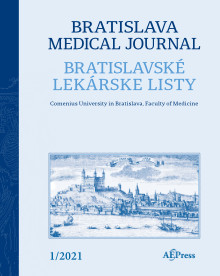Journal info
|
||||
Select Journal
Journals
Bratislava Medical Journal 2024 2023 2022 2021 2020 2019 2018 2017 2016 2015 2014 2013 2012 Ekologia - Ecology Endocrine Regulations General Physiology and Biophysics Neoplasma Acta Virologica Studia Psychologica Cardiology Letters Psychológia a patopsych. dieťaťa Kovove Materialy-Metallic Materials Slovenská hudba 2025Webshop Cart
Your Cart is currently empty.
Info: Your browser does not accept cookies. To put products into your cart and purchase them you need to enable cookies.
Bratislava Medical Journal Vol.124, No.6, p.454–465, 2023 |
||
| Title: Mathematical model presenting to assess variations in heart rate of different age groups | ||
| Author: Melika JAHANI, Mohammad Karimi MORIDANI, Mansoureh ANISI | ||
| Abstract: OBJECTIVE: Recently, older people’s cardiovascular systems have been affected by aging-related changes. An electrocardiogram (ECG) provides information about cardiac health. Analyzing ECG signals can help doctors and researchers diagnose many deaths. Besides direct ECG analysis, some measurements can be extracted from the ECG signals, and one of the most important measurements is heart rate variability (HRV). Research and clinical domains can benefit from HRV measurement and analysis as a potential noninvasive tool for assessing autonomic nervous system activity. The HRV describes the variation between an ECG signal’s RR intervals over time and the change in that interval over time. An individual’s heart rate (HR) is a non-stationary signal, and its variation can indicate a medical condition or impending cardiac disease. Many factors, such as stress, gender, disease, and age, influence HRV. METHODS: The data for this study is taken from a standard database, the Fantasia Database, which contains 40 subjects, including two groups of 20 young subjects (21‒34 years old) and 20 older subjects (68‒85 years old). We used two non-linear methods, Poincare and Recurrence Quantification Analysis (RQA), to determine how different age groups affect HRV using Matlab and Kubios software. RESULTS: By analyzing some features extracted from this non-linear method based on a mathematical model and making a comparison, the results indicate that the SD1, SD2, SD1/SD2, and area of an ellipse (S) in Poincare will be lower in old people than in young people, but %REC, %DET, Lmean and Lmax will recur more often in older people than in younger ones. Poincare Plot and RQA show opposite correlations with aging. In addition, Poincaré’s plot showed that young people have a greater range of changes than the elderly. CONCLUSION: According to the result of this study, heart rate changes can be reduced by aging, and ignoring this issue could lead to cardiovascular disease in the future (Tab. 3, Fig. 7, Ref. 55). |
||
| Keywords: multidimensional model, heart rate variability, non-linear analysis, recurrence plot, fantasia | ||
| Published online: 28-Feb-2023 | ||
| Year: 2023, Volume: 124, Issue: 6 | Page From: 454, Page To: 465 | |
| doi:10.4149/BLL_2023_070 |
||
|
|
 download file download file |
|

